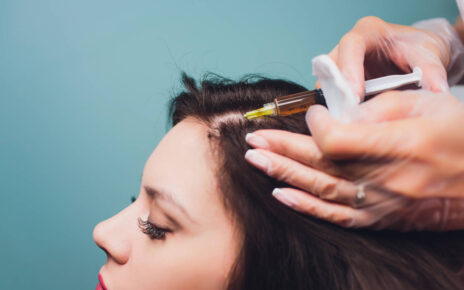Gynecomastia, the enlargement of male breast tissue, can be a frustrating and emotionally draining condition—especially for bodybuilders who work tirelessly to sculpt a lean, masculine physique. It’s a problem that affects many men across different age groups, but its impact is more pronounced among those immersed in bodybuilding. The condition can stem from hormonal imbalances, certain medications, or the misuse of anabolic steroids. When lifestyle modifications fail to reverse the issue, some individuals opt for a gynecomastia operation to restore their chest contour and self-esteem.
Understanding the Link Between Bodybuilding and Gynecomastia
At the core of bodybuilding lies muscle growth and fat loss, driven by intense workouts and a tailored diet. However, this environment often includes performance-enhancing substances like anabolic steroids or prohormones, which can inadvertently lead to gynecomastia. These compounds disturb the body’s natural hormonal balance, increasing estrogen or decreasing testosterone, resulting in the development of glandular tissue under the nipple area.
Beyond steroids, even over-the-counter supplements can be culprits. Ingredients that claim to boost testosterone might also elevate estrogen levels as a side effect. Natural hormonal fluctuations, liver issues, or thyroid dysfunctions can exacerbate the risk, making it important for bodybuilders to stay informed and cautious.
Psychologically, the presence of gynecomastia can take a heavy toll. For athletes whose appearance defines their identity and performance, the emergence of breast tissue can cause embarrassment, reduced self-confidence, and even social withdrawal. This mental strain often leads sufferers to cover up with loose clothing or abandon competitive bodybuilding altogether.
Preventive Measures in a Bodybuilder’s Regimen
The best way to address gynecomastia is by preventing it altogether. For natural bodybuilders, maintaining a well-balanced hormonal environment is key. This includes ensuring proper sleep, managing stress levels, and consuming a diet rich in micronutrients like zinc, magnesium, and vitamin D—each of which plays a role in testosterone regulation.
For those who are using or considering anabolic steroids, the best prevention strategy is simply avoiding their use. However, if one does choose to go that route, proper post-cycle therapy (PCT) becomes essential. PCT helps restore the body’s hormonal balance after a steroid cycle and can significantly reduce the risk of estrogen dominance.
Additionally, regular blood work is highly recommended for those in advanced bodybuilding stages. Keeping track of testosterone, estradiol (estrogen), liver function, and prolactin levels can help detect red flags early, before physical symptoms of gynecomastia begin to appear.
Treatment Options Beyond the Gym
When gynecomastia becomes persistent and resistant to natural correction, treatment becomes necessary. For many, lifestyle changes—like eliminating substances that contribute to hormonal imbalance or altering training routines—can reduce the appearance of gynecomastia. Others might find relief in anti-estrogen medications that block estrogen receptors or inhibit estrogen production.
However, when glandular tissue, not fat, is the root cause, these methods often fall short. True gynecomastia involves the proliferation of breast gland tissue, which does not respond well to exercise or dietary changes. In such cases, surgery is considered the gold standard for treatment.
Gynecomastia surgery typically involves liposuction and excision of glandular tissue. It’s a minimally invasive procedure in most cases, allowing athletes to return to light physical activity within a few weeks. Post-operative care is critical for ensuring symmetrical results and minimizing scar tissue. Compression garments are commonly worn for several weeks to help the skin contract and reduce swelling.
Recovery and Getting Back to Training
The recovery process following surgery or treatment can be a challenging period for bodybuilders, who are often eager to return to their intense training regimens. The key during this time is patience. Rushing recovery can lead to complications such as fluid accumulation, scarring, or recurrence of symptoms.
Most surgeons recommend avoiding upper body exercises for at least 3-4 weeks post-surgery. Light leg workouts and cardio may be allowed earlier, depending on the individual’s healing rate. Full return to weightlifting generally occurs within 6 to 8 weeks, with a progressive plan that gradually increases intensity.
Nutrition also plays a vital role during recovery. A diet focused on lean protein, anti-inflammatory foods, and adequate hydration can promote faster healing and maintain lean muscle mass without intense exercise. Mental recovery is equally important—bodybuilders should be encouraged to see surgery not as a setback, but as a strategic step forward in achieving their ideal form.
Long-Term Considerations and Psychological Recovery
Post-treatment, the risk of recurrence remains if the underlying causes are not addressed. Bodybuilders should avoid reverting to steroid use without medical supervision. Hormonal imbalances can redevelop, and with them, the potential return of gynecomastia.
Counseling or support groups can be valuable, particularly for those who’ve dealt with the psychological toll of the condition. Confidence restoration is just as important as physical recovery. Rebuilding a positive body image takes time and support, especially for those who have lived with visible symptoms for years.
Some individuals also explore scar revision or minor cosmetic touch-ups months after surgery to perfect the appearance of the chest. Though not always necessary, these refinements can help align one’s physical appearance with their expectations and competitive goals.
Conclusion
Gynecomastia and bodybuilding might seem like an unfortunate pairing, but with proper knowledge and care, the condition is manageable and even preventable. Avoiding risky substances, monitoring hormonal health, and being open to medical treatment when necessary are crucial steps. Whether you’re a professional competitor or a passionate fitness enthusiast, understanding how to navigate this condition empowers you to continue training with confidence and pride. Prevention, timely intervention, and a strong recovery plan can ensure that gynecomastia doesn’t define your journey—it simply becomes another challenge overcome in the pursuit of peak physical form.




